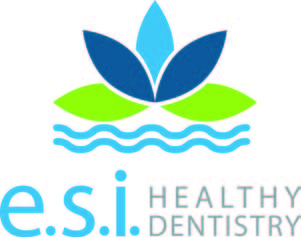Esthetic dentistry, also known as cosmetic dentistry, is a branch of dentistry that focuses on improving the appearance of a person’s teeth, gums, and smile.
While traditional dentistry primarily deals with diagnosing, preventing, and treating dental problems related to oral health, esthetic dentistry emphasizes aesthetic concerns. The goal of esthetic dentistry is to enhance the overall appearance of a person’s teeth and smile, often through various dental procedures and treatments. Excellent oral / dental health is also an essential component of a beautiful smile. Ceramics play a very important role in esthetic dentistry.
We have been using ceramics in dentistry for decades. Because ceramics can be very esthetic they can be used for restoring broken down teeth. Teeth can be compromised by fractures, failing fillings or extensive decay. Crowns are the most common restorations to restore teeth that are compromised. A crown is like a cap that goes over a compromised tooth and circumferentially covers it. Originally crowns were made up of gold. As you can imagine, that is not very natural looking. Metal is not exactly like tooth structure.
The introduction of porcelain was so that these restorations are more esthetic. However, the original application was for porcelain fused to metal crowns. Essentially the substructure was metal and porcelain was baked on top.
Porcelain functions well under compression but not under tension. For example, you can stack up 10 porcelain plates without any issue of fracture as the plates compress each other. If you grab a plate between two vices and pull, the plate will shatter. Hence, original porcelain fused to metal crowns would be at risk of chipping and fracturing. Nowadays, we have ceramics that are more esthetic, durable and biomimetic. Examples are lithium disilicate, zirconia, pressed ceramics and layered porcelain fused to zirconia. There are different applications for all of these. Zirconia is more brawn than beauty as it has no translucency. Layered porcelain is the ultimate in esthetics as the ceramist can incorporate multiple effects to mimic how natural teeth behave. Lithium disilicate can have low, medium or high translucency and, in areas of low stress such as the front teeth, it can combine strength and beauty. Pressed ceramics are great for big fillings called inlays or onlays.
These ceramics can be used for veneers, crowns, inlays, onlays, bridges replacing multiple teeth as well as implant restorations. They are biocompatible, durable, esthetic and long lasting. The gums respond very well around them and they are easy to keep clean. They also behave much like teeth as they have the same modulus of elasticity, wear characteristics and thermal coefficient of expansion. In other words, they flex and expand just like teeth in different environments; hot, cold, chewing, grinding.
 Jimmy Kilimitzoglou, DDS, FACD, FPFA, DABOI, MAGD, FAAID, FICOI ESI
Jimmy Kilimitzoglou, DDS, FACD, FPFA, DABOI, MAGD, FAAID, FICOI ESI
Healthy Dentistry
42 Terry Road, Smithtown, NY 11787
Tel (631) 979 7991 / Fax (631) 979 7992
dental@esihealthydentistry.com
www.esihealthydentistry.com
– A D V E R T O R I A L –
















